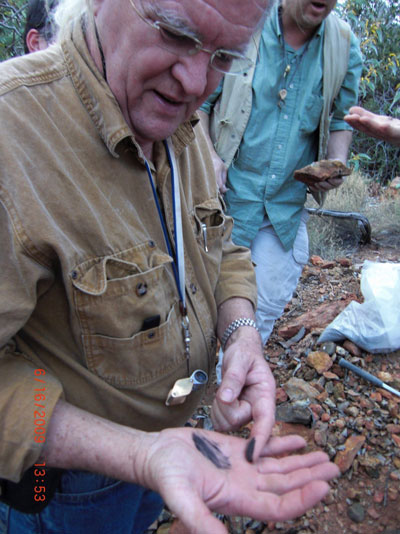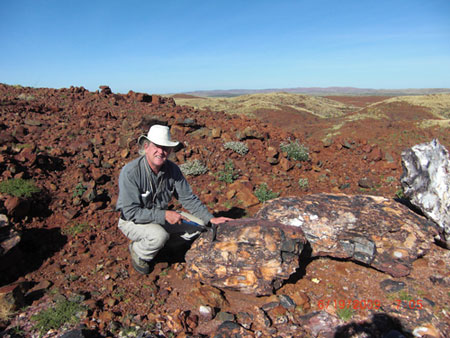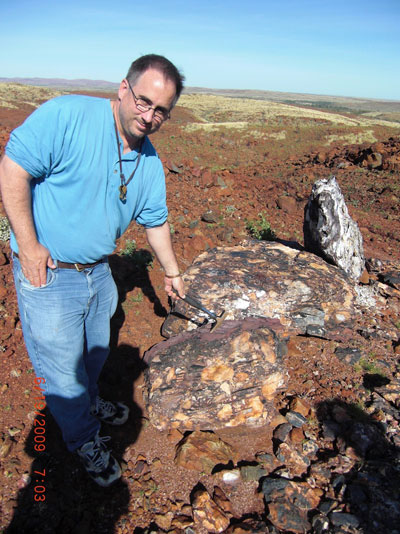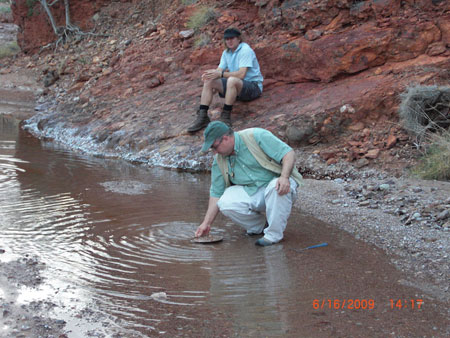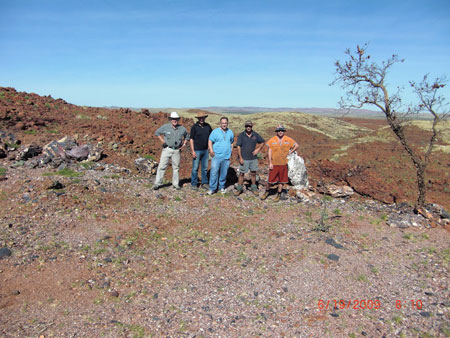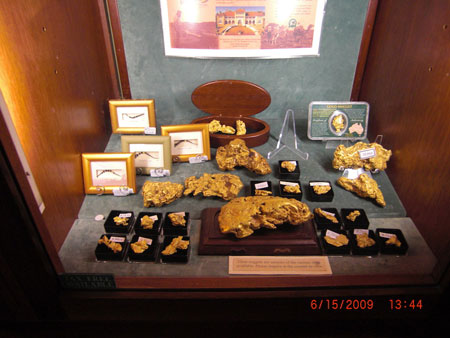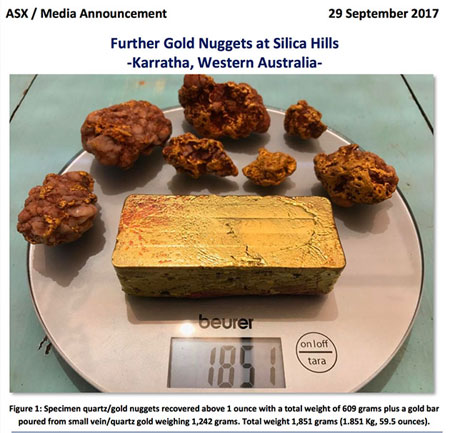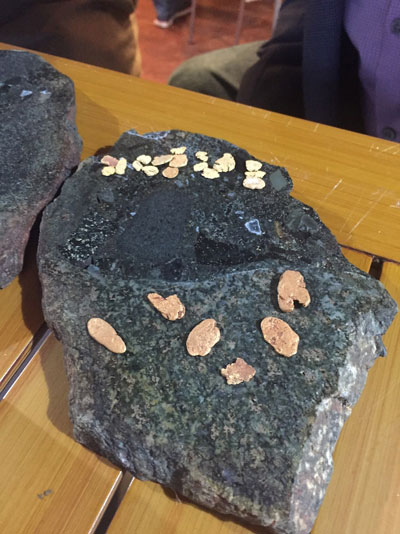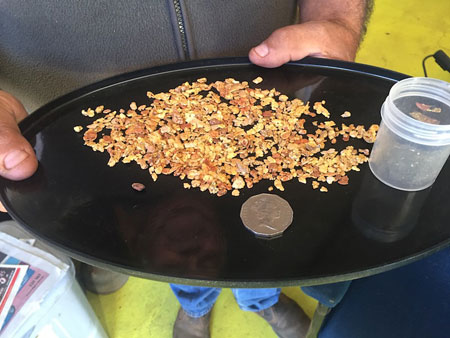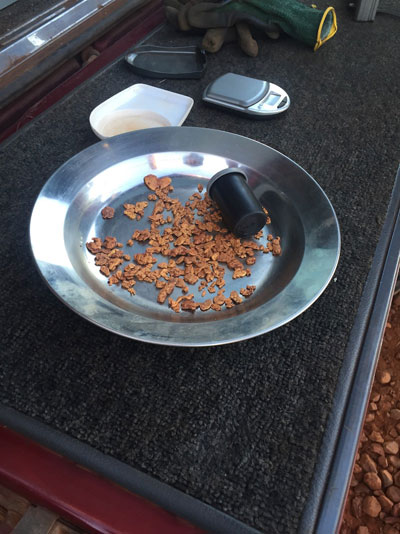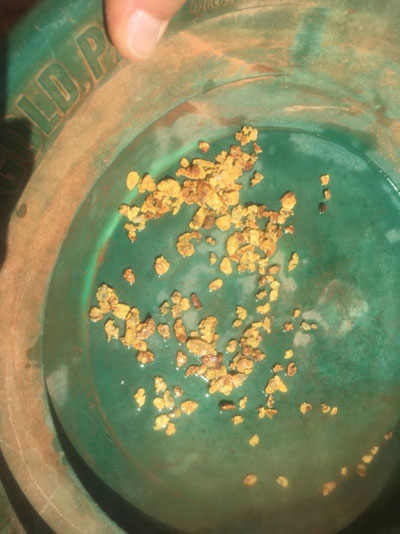| |||
What Happened to the Crow?Bob Moriarty Prospectors discovered gold in the Pilbara Basin in Western Australia as early as 1882, however, the real gold boom didn’t begin until 1888 when a young man named James Withnell splitting logs on his father’s farm picked up a rock to throw at a crow perched on his lunch bucket. The rock seemed unusually heavy and young James suspected it might contain gold. James and his father John assembled a few of the rocks they thought might have gold and took them to the local Government Resident, Colonel Angelo for help. Colonel Angelo promptly sent a telegram to Perth saying, “Jimmy Withnell picked up a stone to shy a crow…” In his excitement neglected to say more. Baffled by the truncated telegram, the government office in Perth replied back, “Did he really? What happened to the crow?” The exchange went down as the spark that led to the first authentic gold rush in Western Australian history. You see you need more than gold for a gold rush, you need a good story as well. Quinton Hennigh began his theory as to the origin of the gold in the Witwatersrand Basin twenty-four years ago. He postulated that since salt water some 2.7-3.0 billion years ago had the ability to contain between 1,000 and 10,000 times more gold than salt water today, any free gold would have been absorbed by the acidic salt water. Eventually as single cell cyanobacteria produced oxygen as a byproduct, the atmosphere of the earth changed. Quinton believed that as the chemistry of the water changed as oxygen was produced by the cyanobacteria, the gold precipitated out of solution in the presence of carbon from the skeletons of the cyanobacteria. In South Africa some of the gold reefs are associated with what is called a "carbon leader" since gold and carbon share an affinity. He told me his theory in 2008. I found it interesting, perhaps more interesting than the other 256 bullshit theories geologists have passed on to me over the past two decades. In June of 2009 Quinton and I took a ten-day trip to Western Australia to meet with Mark Creasy, the foremost and richest prospector in Australian history. He just happened to have one of the largest land positions in the Pilbara Basin. Quinton’s theory wasn’t just limited to South Africa; his theory held that any Achaean age basin might have the same potential for gold. You don’t hear much of Mark Creasy in relationship to Novo Resources any more. He was the largest shareholder for years but never participated in any of the placements so as Eric Sprott, Newmont and now Kirkland Gold took larger and larger positions his piece got smaller and smaller. But never for a moment think that Mark Creasy wasn’t a key player in the start of what I believe will be the biggest gold district in history. If Quinton and Mark haven’t been working to do a deal for the last fifteen years, the Pilbara would remain a district with some gold in it. It took the vision of Mark Creasy and Quinton Hennigh to put this deal together. And in my usual modesty I told them nine years ago that not only did the project need Mark Creasy’s land and vision, and Quinton Hennigh’s theory, it also required someone who could tell a good story. Naturally that would be me. You have to have a good story to have a gold rush. We borrowed a couple of Mark’s geologists and headed out into the Pilbara basin in the dead of Australian winter to try to prove the theory. It was a trip. We were sleeping in tents in a campground, eating out of cans heated over an open fire drinking $1200 a bottle wine but that’s another story. We pounded on rocks. Quinton showed us where the conglomerate beds were containing gold. He even found a piece of carbon for me. At that moment I became a believer. By and large I’ve gotten it pretty right ever since. (Click on images to enlarge) Quinton has used the term paleoplacer for the style of gold since he started the company. And since he formed Novo I have told him that it wasn’t paleoplacer. Paleoplacer simple means “old placer.” But if water were that acidic 2.7 billion years ago, the salt water would have consumed any free gold at surface. There wouldn’t have been any “free gold” it would have all been in solution. The gold in the Wits came from the salt water as the chemistry changed and it combined near carbon. It was not typical “placer” old or new. Indeed, the gold in the Wits is tiny. Placer gold has been reworked by the action of water and by getting beaten up by other rocks. One piece of placer gold never looks like another piece of placer gold. Quinton found out about the prospectors using metal detectors to locate nuggets in conglomerate beds near Karratha back in February. He began a giant program of land staking and doing deals at once because he understood that all of the conglomerate under the basalt might contain high grade gold. But even he didn’t realize the impact of what the gold meant. I saw pictures of the gold as he was staking and frankly it didn’t mean all that much to me. We did a tour to Japan with Quinton, his lovely wife Heather, Brent Cook and Akiko Levinson back in July. Quinton brought a bunch of gold with him from the new projects near Karratha. It struck me that the gold was remarkably consistent in size and shape. That has to mean something important. Brent Cook and I met with Quinton in early August in Perth for our tour of the new area near Karratha. Quinton had a lot more gold. It was all virtually identical. I remained convinced that the similarity of the gold had to mean something really important. Quinton and I had our ongoing difference of opinion as to how the gold got in that shape in the conglomerate. He continued to maintain that it was placer gold washed down from some long forgotten gold rich mountains into the basin. I maintained that it was not classic placer gold but gold that had somehow been remobilized either by bacteria or chemically. We were both wrong. Last week on the Stockhouse chat board a poster said something of vital importance that is a game changer for both the gold in the Pilbara but also the gold in the Wits. It is conclusive proof that the gold precipitated out of solution in the presence of carbon. Quinton’s theory has been proven 100%. The poster’s handle is Docmz2. I don’t know his real name. I tried to contact him in order to give him full credit for the verification of the theory but he hasn’t reached out to me so frankly I have no idea of who he is but I will tell all my readers, this guy nailed it.
That is not water washed nuggets of gold that floated down some stream into the Pilbara Basin. That is gold the precipitated out of solution as the chemistry of the water changed and it combined with bacterial super colonies to achieve the size and shape they now have. Quinton was wrong to suggest that it was typical paleoplacer and I was wrong to suggest it had been remobilized after coming out of solution. The proof is going to be real easy. All of that watermelon seed style gold is going to be remarkably consistent in chemical composition. The watermelon seed gold is proof positive that Quinton’s 24-year-old theory is dead right. What it means for quantity of gold in Karratha is still open. If it is not gold from some river or concentration on a beach, it should be consistent across the basin. We know there is identical gold 110 km apart and now have every reason to believe it will be continuous. We don’t know how thick the conglomerate is and we don’t know if these bacterial super colonies were in a thin layer or throughout the conglomerate. But now we know after nearly 130 years where the gold came from. That’s a BFD. It wasn’t some widely spread out placer deposit as has always been believed, it was deposited on the bed of the basin in the presence of cyanobacteria. Novo has been my largest share position since the company was formed. Novo is an advertiser and as such I would be insane to not be biased. Do your own due diligence. There are still dozens and dozens of other bullshit theories out there. Novo Resources ### Bob Moriarty |
Copyright ©2001-2026 321gold Ltd. All Rights Reserved

